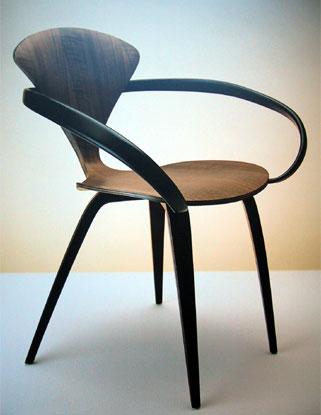
Ask Ben Cherner when his interest in his father’s work began, and you begin to understand the term ‘legacy’. "My father’s studio was next to the house," Ben recalls, "so even as children we were consulted on his latest designs. He loved his work and it was a very positive influence on me and my brother." Ben’s father, Norman Cherner, was a noted furniture designer in the late 50’s; one of a remarkable group who’s ranks included George Nelson, Charles and Ray Eames, and Isamu Noguchi. He was most distinguished for the chair that his sons are now reintroducing in a reissue.
by R.McManus
![]()
![]()

